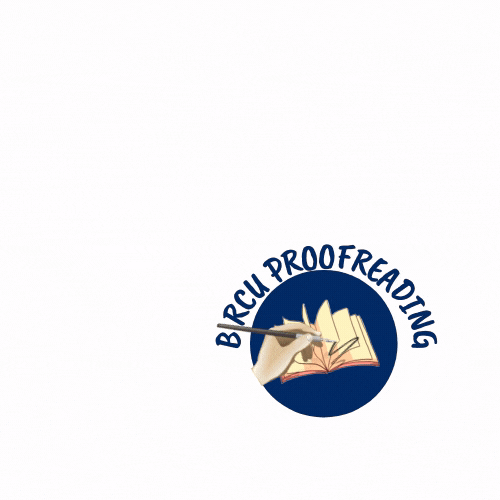Implementation of Online Learning Using Online Media, During the Covid 19 Pandemic
Abstract
Due to outbreak of the Covid 19, the implementation of education and learning has extremely changed. Face to face meetings as a conventional learning is no longer conducted, in contrast, online learning is more often employed. Thus, a solution to this problem is required to respond to this problem. Online learning is an alternative that can overcome this problem. The purpose of this research is to get a reflection of the implementation of online education by using online media to reduce the outbreak of Covid-19 in universities. The research subjects were PGMI students who were interviewed through Zoom Cloud Meeting to collect the data. The data analysis employed was an interactive analysis method Miles & Huberman. The results of the research showed that: (1) the students had already had the basic facilities needed to explore online education; (2) the online education was flexibly being implemented, encouraging learning independently, motivating to learn more actively; and (3) long distance education urges the students to get used to social distancing attitude and minimizes crowds to reduce the outbreak of Covid-19 in institutions tertiary. The lack of supervision of students, lack of internet signals in remote areas, and high quota payments were challenges in online education. The increasing of independent learning, attention, motivation, and the courage to express ideas and problems was another advantage of online education.
Keywords
Full Text:
PDFReferences
Darmalaksana, 2020. Whats App Kuliah Mobile. Fakultas Ushuluddin UIN Sunan Gunung Djati Bandung.
Enriquez. 2014. Students Perceptions on the Effectiveness of the Use of Edmodo as a Supplementary Tool for Learning. DLSU Research Congress 2014. https://xsite.dlsu.edu.ph/conferences/dlsu_research_congress/2014/_pdf/proceedings/LLI-II-010-FT.pdf, diakses tanggal 15 Oktober 2020.
Gikas, J., & Grant, M. M. 2013. Mobile computing devices in higher education: Student perspectives on learning with cellphones, smartphones & social media. Internet and Higher Education. https://www.sciencedirect.com/science/article/abs/pii/S10967516 13000262, diakses tanggal 15 Oktober 2020.
He, W., Xu, G., & Kruck, S. 2014. Online IS Education for the 21st Century. Journal of Information Systems Education. https://www.questia.com/library/journal/1G1-406164669/online-is-education-for-the-21st-century, diakses tanggal 15 Oktober 2020.
Ibrahim, D. S., & Suardiman, S. P. 2014. Pengaruh Penggunaan E-Learning Terhadap Motivasi Dan Prestasi Belajar Matematika Siswa Sd Negeri Tahunan Yogyakarta. Jurnal Prima Edukasia, 2 (1), 66. diakses tanggal 15 Oktober 2020.
Korucu, A. T., & Alkan, A. 2011. Differences between m-learning (mobile learning) and elearning, basic terminology and usage of m-learning in education. Procedia - Social and Behavioral Sciences. https://files.eric.ed.gov/fulltext/ED593111.pdf, diakses tanggal 15 Oktober 2020.
Kumar, V., & Nanda, P. 2018. Social Media as a Tool in Higher Education: A Pedagogical Perspective. International Journal of Information and Communication Technology Education. https://www.igi-global.com/gateway/chapter/234258, diakses tanggal 15 Oktober 2020.
Kuntarto, E. 2017. Keefektifan Model Pembelajaran Daring dalam Perkuliahan Bahasa Indonesia di Perguruan Tinggi. Indonesian Language Education and Literature, 3 (1), https://syekhnurjati.ac.id/jurnal/index.php/jeill/article/view/1820, diakses tanggal 15 Oktober 2020.
Molenda, Michael. 2005. Instructional Technology and Media for Learning. New Jersey Colombus, Ohio.
Moore, J. L., Dickson-Deane, C., & Galyen, K. 2011. E-Learning, online learning, and distance learning environments: Are they the same? Internet and Higher Education. https://www.sciencedirect.com/science/article/abs/pii/S1096751610000886, diakses tanggal 15 Oktober 2020.
Pangondian, Santosa, & Nugroho. 2019. Faktor-Faktor Yang Mempengaruhi Kesuksesan Pembelajaran Daring Dalam Revolusi Industri 4.0. Seminar Nasional Teknologi Komputer & Sains, Vol. 1, No. 1, file:///c:/users/lenovo/downloads/122-122-1-pb%20(1).pdf, diakses tanggal 15 Oktober 2020.
Prasasti, T.I., et al. (2019). The Effectiveness of Learning Media Folklore Text of North Sumatera Based on Blended Learning by 10th Grade Students of Vocational High SchoolHarapan Mekar-1 Medan. Budapest International Research and Critics in Linguistics and Education (BirLE) Journal. P. 480-490.
Reotutar, M.A.C. (2020). Teacher Education Freshmen Applicants’ Current State in the New Normal’s Learning Delivery Platforms. Budapest International Research and Critics in Linguistics and Education (BirLE) Journal. P. 1528-1536.
So, Simon. 2016. Mobile Instant Messaging Support For Teaching And Learning In Higher Education. Internet and Higher Education. https://www.sciencedirect.com/science /article/abs/pii/S1096751616300343, diakses tanggal 15 Oktober 2020.
Wahid, R., et al. (2020). Digital Activism: Covid-19 Effects in Campus Learning. Budapest International Research and Critics in Linguistics and Education (BirLE) Journal. P. 1336-1342.
Zhang, D., Zhao, J. L., Zhou, L., & Nunamaker, J. F. 2004. Can E-Learning Replace Classroom Learning? Communications of the ACM. https://arizona.pure.elsevier .com/en/publications/can-e-learning-replace-classroom-learning, diakses tanggal 15 Oktober 2020.
Zimmerman, B. J. (2000). Attaining self-regulation: A social-cognitive perspective. In M. Boekaerts, P. R. Pintrich, & M. Zeidner (Eds.), Handbook of self-regulation, (pp. 13– 39). San Diego: Academic.
DOI: https://doi.org/10.33258/birci.v4i2.1857
Article Metrics
Abstract view : 588 timesPDF - 238 times
Refbacks
- There are currently no refbacks.

This work is licensed under a Creative Commons Attribution-ShareAlike 4.0 International License.

This work is licensed under a Creative Commons Attribution-ShareAlike 4.0 International License.
_.gif)
















_.gif)



